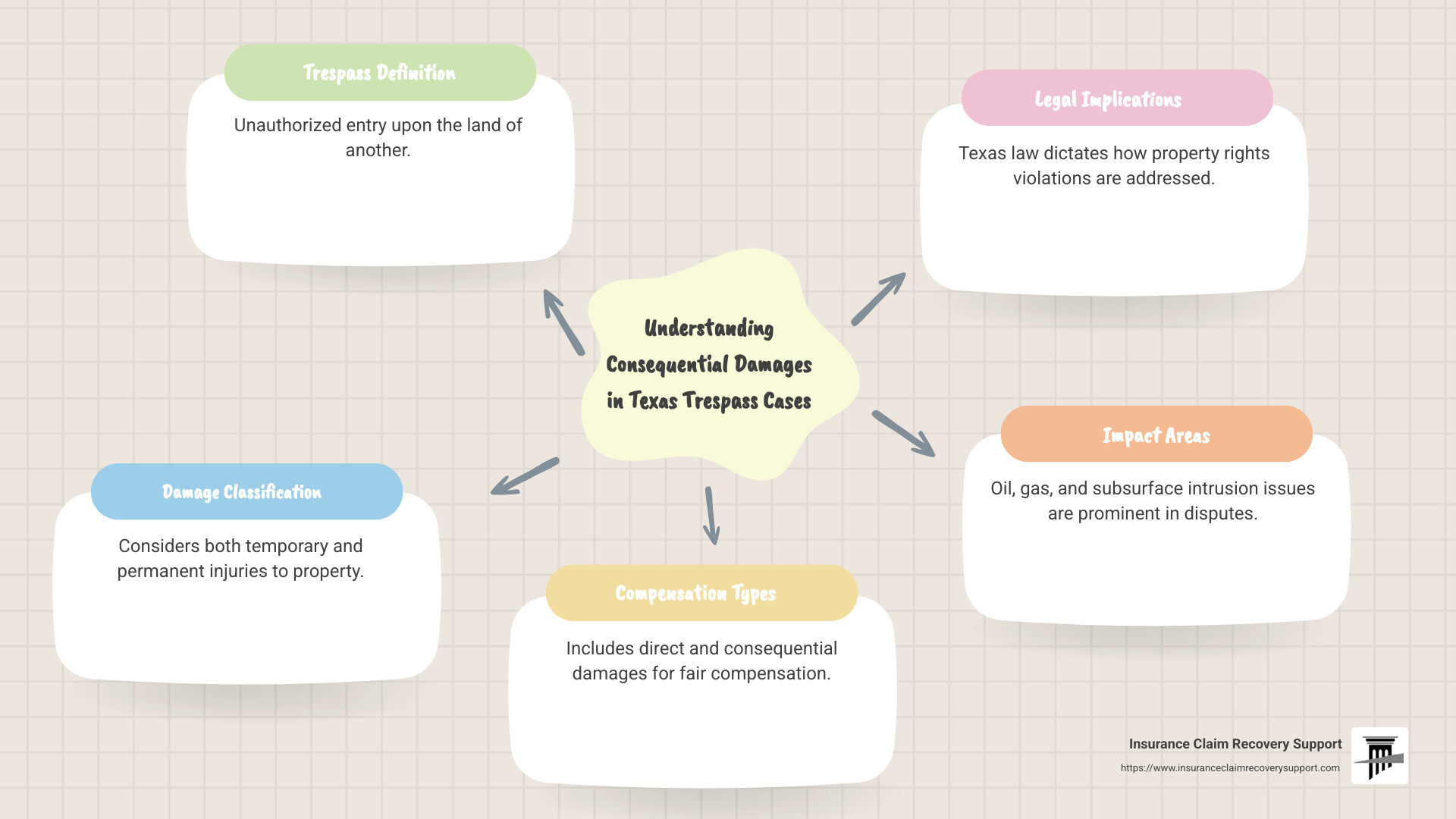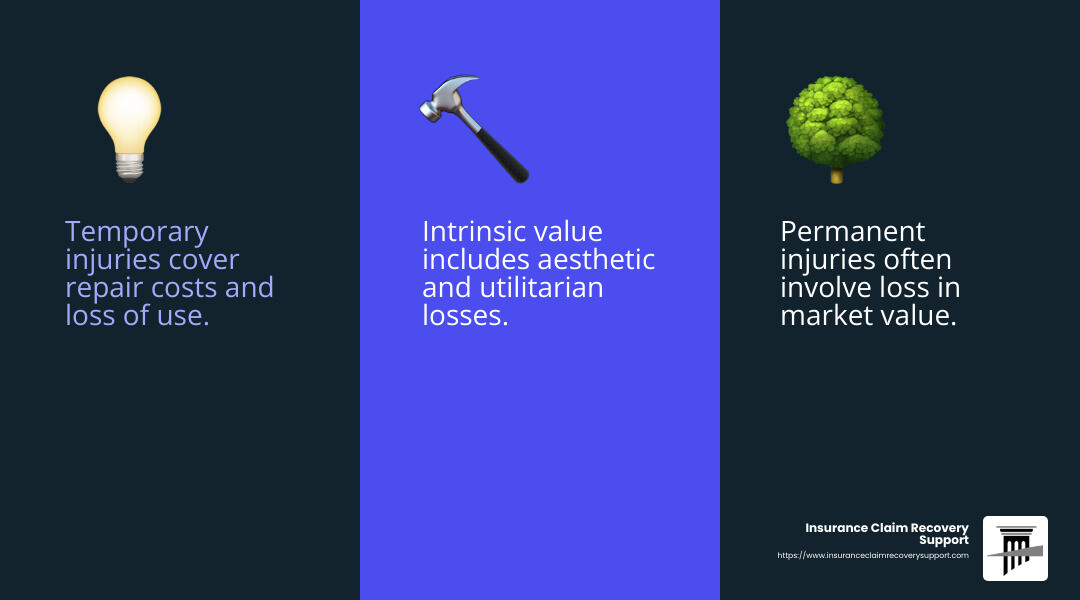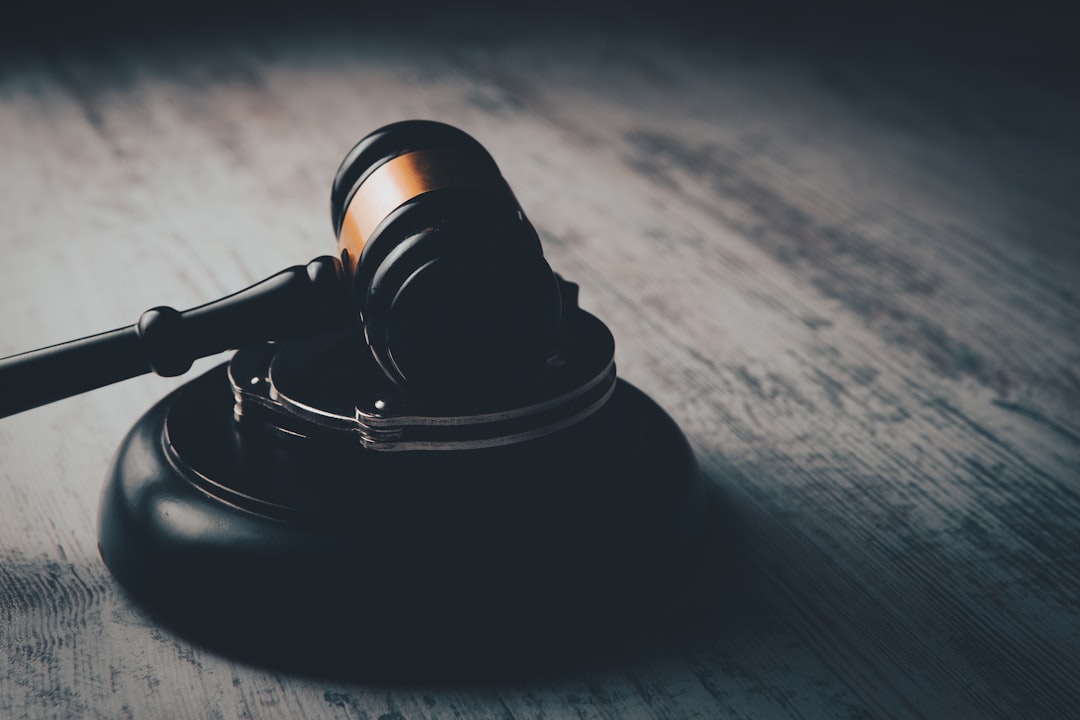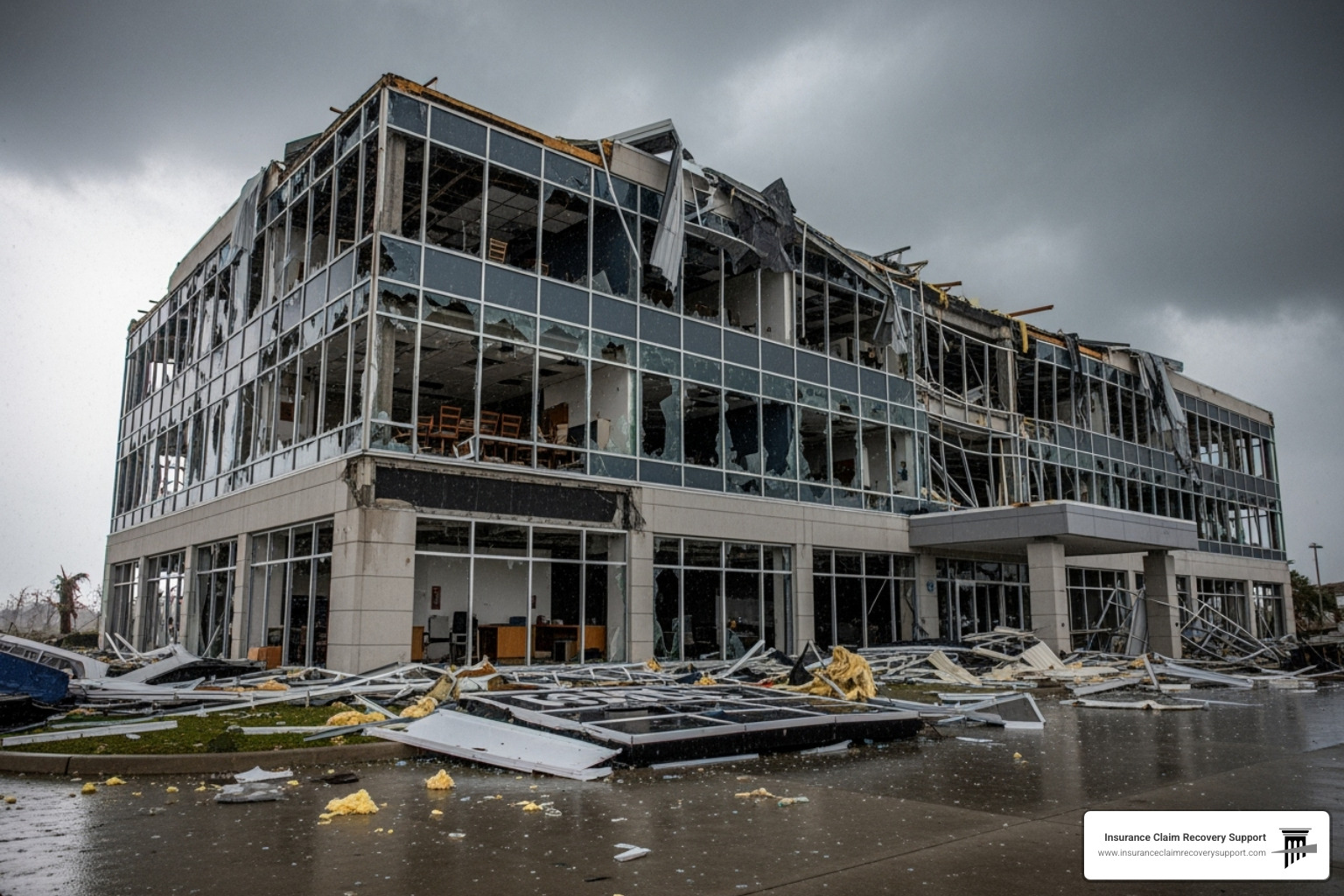Consequential damages in a trespass and real property and texas are significant considerations for property owners dealing with unauthorized entries on their lands. Whether it’s a simple encroachment or a more complex subsurface intrusion, understanding how Texas law interprets and compensates for these actions is crucial. In Texas, trespass law generally hinges on the notion of unauthorized entry, where property rights are violated when someone else encroaches on the land without permission.
- Trespass Definition: Unauthorized entry upon the land of another.
- Damage Classification: Considers both temporary and permanent injuries to property.
- Compensation: Includes direct and consequential damages, emphasizing fair compensation for any losses suffered.
Understanding the nuances of trespass law in Texas is essential for property owners to safeguard their rights and ensure proper compensation in the event of property intrusion. With evolving disputes in oil, gas, and other subsurface issues, property owners must stay informed about legal protections and liability implications under Texas real property law.
I am Scott Friedson, CEO of Insurance Claim Recovery Support, with experience in handling property damage insurance claims across Texas, including in Austin, Dallas-Fort Worth, and Houston. My expertise in consequential damages in a trespass and real property and texas ensures that property owners receive fair and prompt settlements.

Understanding Consequential Damages in Trespass Cases
In Texas, when someone trespasses on your property, the damage isn’t always just physical. The law recognizes that trespass can lead to consequential damages, which go beyond the immediate harm and include losses that naturally follow the trespass. These damages can significantly impact property owners and are crucial to understand.
Temporary vs. Permanent Injuries
When it comes to trespass, Texas law differentiates between temporary and permanent injuries to property.
-
Temporary injuries are those that can be fixed or are not ongoing, like minor landscaping damage. Compensation typically covers the cost of repair and any loss of use during the repair period.
-
Permanent injuries involve more severe damage that affects the property’s long-term value, such as structural damage. Here, compensation often involves the loss in market value rather than repair costs, especially if repairs are not economically feasible.
Economic Feasibility and Intrinsic Value
Economic feasibility plays a pivotal role in determining how damages are assessed. If the cost of repairing a temporary injury is disproportionately high compared to the reduction in market value, the injury could be treated as permanent. This principle ensures that compensation is fair and doesn’t exceed the property’s worth.
The intrinsic value of certain elements, such as trees, also factors into damage calculations. Even if the market value of the land hasn’t decreased, owners may still recover damages for the aesthetic and utilitarian loss of trees.

Understanding these distinctions is vital. It helps property owners in Texas pursue the right compensation for trespass damages, ensuring they are not left with undue financial burdens.
In the next section, we’ll dig deeper into the legal framework for trespass damages in Texas, exploring how the Texas Supreme Court views these issues and what property owners need to know about proving their cases.
Legal Framework for Trespass Damages in Texas
When dealing with trespass damages in Texas, understanding the legal framework is essential. The Texas Supreme Court plays a significant role in shaping how these cases are resolved, especially when it comes to burden of proof and the measurement of damages.
Measuring Damages: Market Value vs. Repair Costs
In Texas, the measurement of damages in trespass cases often revolves around two key factors: market value and repair costs. The choice between these depends on the nature of the injury to the property.
-
Market Value: For permanent injuries, damages are typically assessed based on the difference in the property’s market value before and after the trespass. This approach ensures that property owners are compensated for the long-term impact on their property’s worth.
-
Repair Costs: For temporary injuries, the focus is on the cost to restore the property to its original condition. This may include expenses related to materials, labor, and any loss of use during the repair period.
The Texas Supreme Court has emphasized flexibility in applying these measures to ensure fair compensation without overcompensating property owners. This approach seeks to balance the interests of both parties involved in the trespass case.
Trespasser’s Intent and Liability
The intent of the trespasser also plays a crucial role in determining liability and the potential for additional damages, such as punitive damages.
-
Good Faith Belief: In some cases, a trespasser might genuinely believe they have the right to enter the property. If this belief is found to be reasonable and in good faith, it may mitigate liability. However, this does not automatically absolve them from responsibility for damages caused.
-
Punitive Damages: These are awarded in cases where the trespass is intentional and egregious. The goal is to punish the trespasser for their actions and deter similar behavior in the future. The Texas Supreme Court has outlined that punitive damages should only be applied when the trespasser’s conduct is particularly harmful.
Understanding these elements is vital for property owners seeking compensation for trespass damages. Knowing how damages are measured and the implications of the trespasser’s intent can significantly impact the outcome of a case.
In the upcoming section, we will explore consequential damages in a trespass context, including real-world examples and how they can affect property owners in Texas.
Consequential Damages in a Trespass and Real Property and Texas
When someone trespasses on your property in Texas, the damage isn’t always just about the broken fence or trampled garden. Consequential damages can arise, impacting you in ways that aren’t immediately visible. Let’s explore what these damages look like and how they might affect you.
Examples of Consequential Damages
Foreseeable Damages: Consequential damages are those that arise as a natural outcome of a trespass. They are not the direct damage, like a broken window, but the ripple effects, such as losing rental income because a tenant couldn’t move in on time.
Loss of Use: Imagine you own a parking lot, and someone blocks access to it for a few days. Even if they didn’t physically damage the lot, you’ve lost the ability to use it, which can be a significant financial hit. This concept was highlighted in the case of Coinmach Corp. v. Aspenwood, where the court recognized the importance of compensating for the loss of use of property.
Loss of Profits: If a trespasser disrupts your business operations, you might lose profits. For instance, if a trespasser damages equipment essential for your business, the downtime can translate to lost revenue. The Texas courts require that these lost profits be proven with reasonable certainty, meaning you can’t just guess the amount.
Emotional Distress: Trespassing can also cause emotional harm. The invasion of your private space might lead to stress or anxiety, especially if the trespass was intentional or repeated. While emotional distress is harder to quantify, it is recognized as a consequential damage in some cases.
Physical Injury: In rare instances, a trespass might lead to physical injury. For example, if a trespasser leaves hazardous materials on your property and you or someone else gets hurt, this injury is a consequential damage resulting from the trespass.
Understanding these examples helps in recognizing the broader impact a trespass can have on your life and property. It’s about more than just fixing what’s broken; it’s about addressing all the ways the trespass has affected you.
Next, we’ll dive into some frequently asked questions about consequential damages in Texas, helping you steer these complex issues.
Frequently Asked Questions about Consequential Damages in Texas
What are consequential damages for trespassing?
Consequential damages refer to the secondary effects of a trespass that aren’t immediately obvious. In Texas, these damages are considered when they arise naturally from the trespass and are foreseeable. For example, if someone trespasses on your property and disrupts your business operations, leading to lost profits, those lost profits would be considered consequential damages. They go beyond the direct physical damage, capturing the broader impact of the trespass on your life and livelihood.
How are damages measured in Texas trespass cases?
In Texas, the measurement of damages in trespass cases hinges on whether the injury to the property is considered temporary or permanent.
-
Temporary Injuries: These are injuries that can be repaired or are intermittent. The typical measure for temporary damages includes the cost of repair and any loss of use during the repair period. For example, if a trespasser damages your garden, the cost to replant and any loss of enjoyment or use of the garden would be considered.
-
Permanent Injuries: These are injuries that cannot be easily repaired or reversed. In such cases, damages are often measured by the reduction in the property’s market value. If a trespasser permanently damages a unique feature of your property, the compensation would aim to reflect the decrease in overall property value.
The Texas Supreme Court has emphasized that the default measure for property damage is usually the cost to restore the property, as long as this cost does not exceed the loss in market value.
Can punitive damages be awarded in trespass cases?
Yes, punitive damages may be awarded in Texas trespass cases, but under specific circumstances. These damages are meant to punish the trespasser for particularly egregious behavior and deter future misconduct. For punitive damages to be awarded, the trespass must be shown to be intentional or malicious.
The case of Coinmach Corp. v. Aspenwood illustrates that when a trespass is deliberate and causes actual damage, punitive damages can be considered. However, if the trespasser acted in good faith or believed they had the right to enter the property, punitive damages are typically not justified.
Understanding these aspects of consequential and punitive damages helps property owners in Texas recognize the full scope of compensation they might be entitled to. In the next section, we’ll explore more about the legal framework guiding these damages.
Conclusion
At Insurance Claim Recovery Support, we understand the complexities of property damage claims in Texas, especially when it comes to consequential damages in trespass cases. Our mission is to stand by policyholders, ensuring they receive the maximum settlement they deserve. We have experience in handling property damage claims resulting from various incidents, including fire, hurricanes, and floods.
Our team is based in Texas, with locations in major cities like Austin, Dallas-Fort Worth, San Antonio, Houston, and more. We are dedicated to providing expert assistance to clients throughout the state, helping them steer the often-complicated insurance claim process. Whether you’re dealing with temporary or permanent property damage, we are here to advocate for your rights and ensure that you are compensated fairly for all damages, including those that may not be immediately apparent, like loss of use or lost profits.
For more information on how we can assist you with your property damage claim, visit our Texas Flood Property Damage Insurance Claim Tips for Policyholders page. Let us help you steer the path to recovery with confidence and peace of mind.






